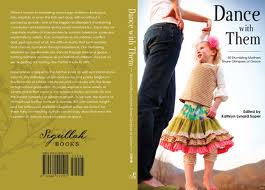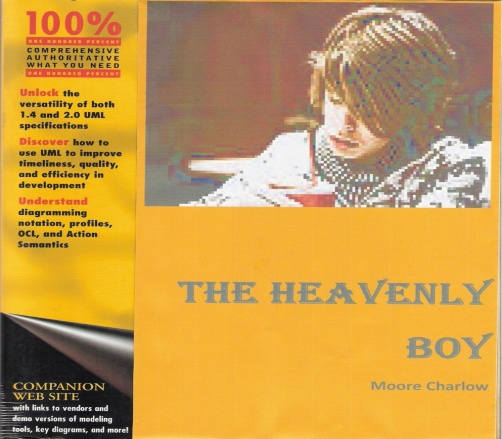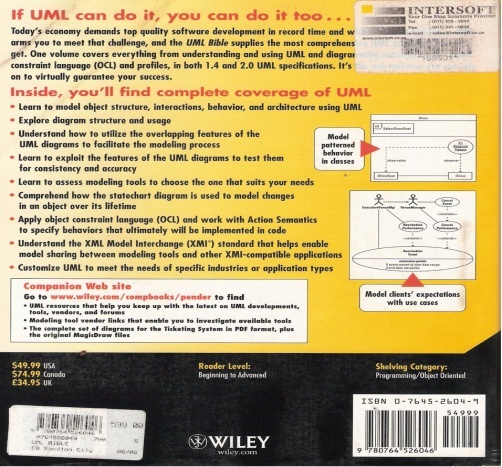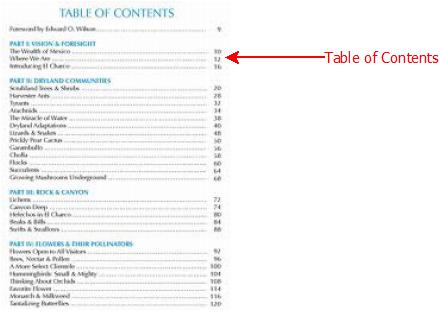Introduction
Unlike their experience in early school, where “reading” is restricted to recognising letters and words and understanding simple sentences, students at the JSS level need to comprehend and respond to whole texts (paragraphs, sections, lessons and books) that deal with a variety of subjects. They will use, for example, textbooks on Mathematics, Geography, Biology, Economics or English Literature — reading material that encodes meaning in different ways, such as paragraphs, diagrams, tables, lists, graphs and so on. An efficient reader can decode the information given in a text and store it in a way that allows him or her to retrieve the information when necessary, transform it into graphical form if necessary and use it for real-life purposes. For example, a student may be required to list the uses of aluminium in a Science exam, draw and label landforms in a Geography exam, compare and contrast the two world wars in Social Studies or summarise a poem in English Literature.
In other words, reading is an active skill that involves processing information effectively and using it in various contexts and forms. Memorising and repeating whole chunks of texts is not the sign of an efficient reader: at best, these help develop pronunciation skills. When we teach students to read effectively, we train them in using certain strategies that allow them to pay maximum attention to meaning so that they can comprehend a text and use the information in it effectively. By teaching students reading strategies, we empower them to decipher meaning in any kind of reading material on their own. In this unit, we will discuss and demonstrate strategies that you can use to improve the reading skills of your students to help them read well across the curriculum.
Unit outcomes
Upon completion of this unit you will be able to:
|
Outcomes |
|
Terminology
|
Terminology |
Surveying: |
Using several strategies such as scanning and skimming together to get an overall idea of a book/article/passage. It includes such activities as reading the first and last paragraphs of a text, the index page, the foreword, etc. Surveying is a preparatory activity; it is done before one reads the book or article. This aids comprehension because it tells us what to expect to read even before we have read a page of the book or article. |
Linking devices: |
These are sometimes referred to as discourse markers or linkers. They are words and phrases used in speech and writing to help people understand the message by connecting one idea to the next. These words usually come at the beginning of a sentence and function like signposts on a road. For example, at first, finally, in short, however, etc. |
|
Summary note card: |
A rectangular card, about 5 inches by 3 inches in size, that is used to note short summaries of books or passages, including publishing details, for later use. |
Case study
|
Case study |
English teacher Miss Winnie Rodgers of Hilltop High School was happy with the progress the slower readers in her class were making with her special reading programme. They practised using the skills she had taught them, such as skimming for the overall idea of a text and scanning a text for specific information. They looked noticeably more confident and were engaged actively in the learning experience. Some students brought newspapers, magazines and books from home to school to add to the collection in the book corner. She was especially pleased about this. When other subject teachers complained in the staff room about the students’ poor comprehension in their subjects, Miss Rodgers shared with them the techniques she had used to transform poor readers into efficient ones. With her colleagues’ encouragement she decided to give her students practice in using the same strategies to read other school subjects. She selected three passages: a science experiment that included a diagram, a comparative passage on two periods in history and a passage from an Economics text that discussed, with the help of a table, the effects of rising costs on the lifestyle of the poorer sectors of society. For each passage, she devised sets of exercises that made students survey the text for gist, scan for specific information, transfer the information from the table and diagram into paragraph form, and so on. After two weeks, she asked her colleagues if these practice sessions had made any difference in their students’ responses and comprehension. She was thrilled to hear from each of the teachers that the students had performed much better on their class tests, and had been more engaged in reading the textbooks in the class. The students’ overall performance improved dramatically that year, and the principal organised a week’s orientation for all subject teachers to use these strategies regularly in class. |
|
Points to ponder |
|
Activities
Activity 1: Surveying text
|
Activity 1 |
Reading is a skill that we use to get information from a text and also for our pleasure or entertainment. We read a variety of texts with different purposes, at different speeds and with different levels of comprehension. When we teach students to read efficiently, we not only train them to recognise words and structures in a particular language (in this case, English), we give them strategies to comprehend and recall the information they read on various topics and subject areas. In this activity, we will introduce you to some strategies that your students can use to get information about the text they are going to read, even before they actually read it. This not only motivates them to read, it helps them comprehend the text better, as they can anticipate what they are going to read about. Before beginning this activity, have the students think about this: when they go to a shop to buy a jar of fruit jam, and the shopkeeper shows them various brands, how do they decide which one to buy? Separate them into pairs and ask each pair to list three things they do to help them take a decision. They should mention looking at the printed price, the ingredients list, the manufacture date, nutritional information, etc. Draw their attention to the fact that we use these same strategies when we buy or borrow a book to read. This process is called surveying — finding relevant information about the contents of the text before actually reading it. Now show them the front and back covers of a book and ask them, still working in pairs, to note what kinds of information they can find about the book, beginning with the name of the author, the price of the book and so on. You can bring your own book, or use the pictures of the book given in Resource 1. Discuss the following:
Discuss the information the students gather — point out that they now have some important information about the book, which will help them decide if it will interest them. Now give them any book from your library, and tell them to note what we call the pages that come before the chapters begin. They should be able to mention the Contents page, the Preface and the Foreword or Introduction. Some books may even have an Epilogue at the end. If the students are not sure of the meanings of these words, briefly explain to them, or have them look up the words in a dictionary. Now announce that they are going to read a book called The Heavenly Boy by Manuela Smith. To prepare themselves to read efficiently, they should do the following:
Collect the students’ responses and draw their attention to how much information they have about the book even before having read it. Encourage them to repeat this activity with other books. As a homework assignment, ask each student to make a summary note card noting information about one book from their class/school library, so that they have a whole collection of cards with neatly recorded information for future use. |
Activity 2: Understanding the use of discourse markers
|
Activity 2 |
As we all know, when we read a text, we do not read only the important words to understand it; we are guided by some words and phrases that serve as signposts and guide our understanding of the information. These signposts are especially useful when we read texts that tell us about objective facts, processes and procedures. For instance, descriptions of physical events such as earthquakes or eclipses, the function of the system, or the consequences of the atom bombs dropped over Hiroshima and Nagasaki need our active concentration, especially if we are reading them for academic purposes. In this activity, we will discuss some functions of these signposts, which we call discourse markers, and have students practise reading texts with attention to these discourse markers. These words and phrases perform various functions such as introducing a topic, listing, adding a point, summarising, clarifying and so on. Introduce the concept of linkers and cohesive devices that are used as discourse markers by bringing up text types the students are familiar with, like a fairy tale or fable. Elicit from them typical markers found in familiar texts. Ask them questions like, “How does a fairy tale start? What are the exact words used? And, how does a murder mystery begin?” Make them aware that they recognise such texts easily because of certain fixed and familiar phrases such as Once upon a time..., A long, long time ago..., Musa heard a scream... Now give Resource 3 to the students, working in pairs, and ask them which passage is clearer and easier to understand, and why. They should notice that the second passage sounds better as it contains certain expressions that help us understand it more easily. To show them another example of how discourse markers work, give each pair the passage in Resource 4 about making tea, and have them do the accompanying task. At the end of the task, have a discussion on how the use of expressions such as firstly, then, after that, finally, however, etc., gives the second passage a direction, and makes it easier for us to read, understand and remember the information. Explain to them that such expressions (words or phrases) that help the reader to “navigate” through a text are called discourse markers. Such expressions are found in most prose texts, including texts for other subject areas. The ability to recognise the functions of these discourse markers in a text improves both reading speed and reading efficiency. Now divide the students into small groups, and give them a passage from any subject textbook written in English and which contains such discourse markers. (Such passages are common in Social Studies or History textbooks.) Or you could give them the passage in Resource 5. Working with a partner, the students should underline all the discourse markers they find. Then they should say what function these markers are performing in the text. Resource 6 has a table showing the functions of various discourse markers. Work through this with your students at the end of the activity. Give your students a copy of this handout so that they can consult it later, and use it to improve their reading skills. |
Activity 3: Study reading (taking notes from a reading passage)
|
Activity 3 |
When we read something to make use of the information later, such as subject textbooks, reference books, reference articles from a journal or the Internet, for example, we need a way to record the main points for future use — that is, we need to take notes. Note taking involves several strategies like reducing content by leaving out unimportant words, using abbreviations and symbols, listing, paying close attention to discourse markers in the text and summarising. It is an important reading skill, as the strategies can be transferred across the curriculum, when one is studying other subjects. At school, however, we rarely teach students to take notes, preferring to explain the lessons ourselves and then testing students’ comprehension through the accompanying questions. Active reading involves collecting, sequencing and remembering information in a way that can be used later. If students are not encouraged to read and note information by themselves while at school, their reading skills will not improve through college. As a pre-task exercise, divide the students into groups to brainstorm on the different ways in which they remember what you teach them in class. Expected answers would include underlining important sentences, ticking the important points, writing Imp or * next to an important point, etc. Draw their attention to the fact that they do all these in the textbook itself, and that they need to learn how to take notes in their notebooks so that they can revise the important points easily before their exams. Now give them, in their groups, the passages in Resources 7a and 7b. These include two versions of notes taken on a passage by two students. Your students have to read them and decide (i) which student has taken notes in a better way, and (ii) why they think this version is better. During the discussion, elicit points like using numbering, listing, giving headings, using abbreviations and symbols etc., so that they understand how best to take notes. For the final step of this activity, choose a passage from any text suitable for their level. Make sure the passage has at least a few discourse markers so that the students can practice understanding their functions in texts. Ask them to take notes on the passage using strategies like those used in Resource 7b. You can have them refer to Resource 8, which has a list of a few commonly used abbreviations and symbols. Then have them summarise and reconstruct the passage from the notes. This is very important, as it will help them understand whether they managed to take notes on all the important points. |
Unit summary
|
Summary |
In this unit we tried to introduce you to strategies and methods that can be used to encourage students to read efficiently across the curriculum, and should wean them away from bad practices like mugging and cramming. The unit should have given you a variety of activities and resources so that you can give your students plenty of practice in improving their study skills. The unit also took you through a sequence of teaching points — beginning from surveying a text and recognising the functions of discourse markers to taking notes. All of these steps should prepare JSS students to improve their reading skills in different subject areas. |
Reflections
|
Reflection |
|
Assessment
|
Assessment |
|
Resources
Resource 1: A book cover
|
Resource 1 |
 |
Resource 2: Surveying a book: Finding information about content
|
Resource 2 |
|
Resource 3: Understanding the function of discourse markers
|
Resource 3 |
Passage 1a The outermost layer of the Earth is not uniform. It is fragmented. Each fragment is called a plate. These plates are in continual motion. They brush past one another. A plate goes under another due to collision. They cause disturbances in the earth’s crust. These disturbances show up as an earthquake on the surface of the earth. We know for sure what causes an earthquake. It is not yet possible to predict when and where the next earthquake will occur. Passage 1b The outermost layer of the earth is not uniform, but fragmented. Each fragment is called a plate, and these plates are in continual motion. Sometimes they brush past one another, or one plate goes under another due to a collision. When this happens, they cause disturbances in the Earth’s crust, which show up as an earthquake on the surface of the Earth. Although we know for sure what causes an earthquake, it is not yet possible to predict when and where the next earthquake will occur. |
Resource 4: Making an omelette
|
Resource 4 |
Look at the sentences below. They describe the process of making an omelette. However, they are not in the correct order. The box above the sentences contains some words that we use to express what comes after something. Discuss this with a partner and rewrite the sentences in your notebook in a paragraph, according to the correct steps. Remember to add the words from the list where necessary, so that the process of making an omelette is clear to someone who is making one for the first time. You may also join two sentences if you want, like this: When the batter begins to leave the side of the frying pan, carefully lift one end of the omelette with a flat ladle and fold it.
Making an omelette
|
Resource 5: How to make a telephone call from a public telephone
|
Resource 5 |
Making a call from a public telephone is not very difficult. All you need to do is keep some coins ready to insert in the slot, remember the number you want to call and then follow the instructions carefully. To start, lift the telephone receiver and listen. If you hear a continuous dialling tone, it means the phone is working. Otherwise, you will have to go to another booth. When you hear the dialling tone, press the keys of the number you want to call. Then wait for a few seconds for the number to start ringing. If the person on the other end is on another call, you will hear an “engaged” tone. However, if the person picks up to answer your call, you will hear a series of beeps — for example, a “pip-pip” sound. At this point, you will have to drop your coin into the slot. The beeps will stop, and you will hear the voice of the person you are calling. After some time, when your 60 seconds are nearly over, the beeps will begin again to warn you that if you wish to continue speaking, you must put in another coin. You will have another 60 seconds to speak. Finally, when your call is over, replace the receiver and leave the booth so that next caller can make their call. |
Resource 6: Functions of discourse markers
|
Resource 6 |
|
Resource 7a: What causes earthquakes?
|
Resource 7a |
Outermost layer of earth is fragmented Plates are in continual motion Brush past one another One plate goes under another Disturbance causes earthquake. Tremors occur when a volcano erupts Or meteor Or nuclear explosion |
Resource 7b: Making notes on a passage: What causes earthquakes
|
Resource 7b |
Causes of earthquakes 1. Structure of earth’s crust a. Not uniform — fragmented b. Fragment — called a PLATE 2. Movmnt of plates a. in cont. Motion b. sumtimes — brush past another} c. sumtms — 1 plate under anthr } — cause disturbances 3. distrnbancs cause erthqks 4. othr causes:
|
Resource 8: Commonly used abbreviations and symbols in note taking
|
Resource 8 |
|
Teacher questions and answers
|
Feedback |
Question: What do I do if the students’ other subject texts do not contain discourse markers like the ones described in this unit? Answer: Even if such passages are not easily found in your students’ course books, your students must learn how they function in texts, as they will have to read and understand texts themselves after they leave school. The skills described in this unit are ones that have relevance throughout life. Question: Why do I need to teach my students how to take notes if I am there to help them understand the subject texts? Answer: A popular description of a successful teacher is one who “progressively makes herself unnecessary for the students.” Your students will not have you by their side all through their lives, and if you continue to “spoonfeed” them, they will never learn to eat themselves. Our job as teachers is to equip them with the skills that will help them read better through life. Teaching them to take notes now will help them when they go to college, or even when they start work. |
 |
 |
 |




